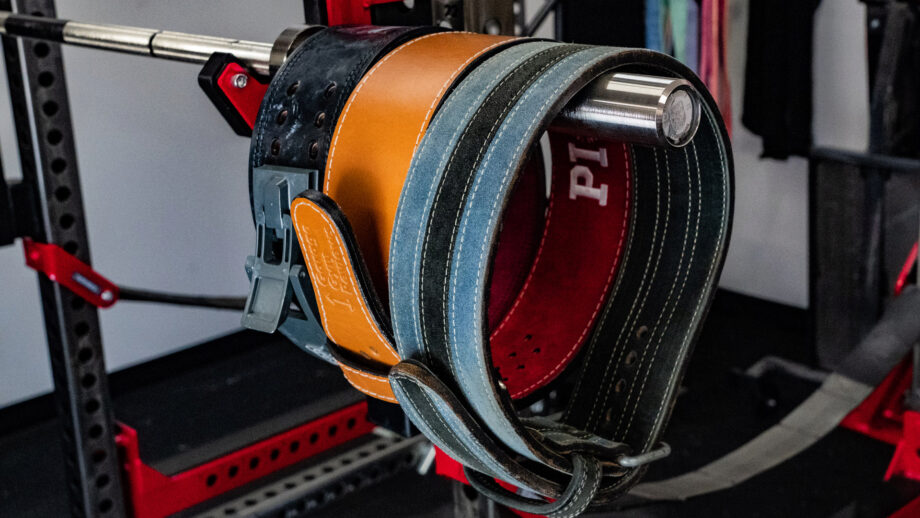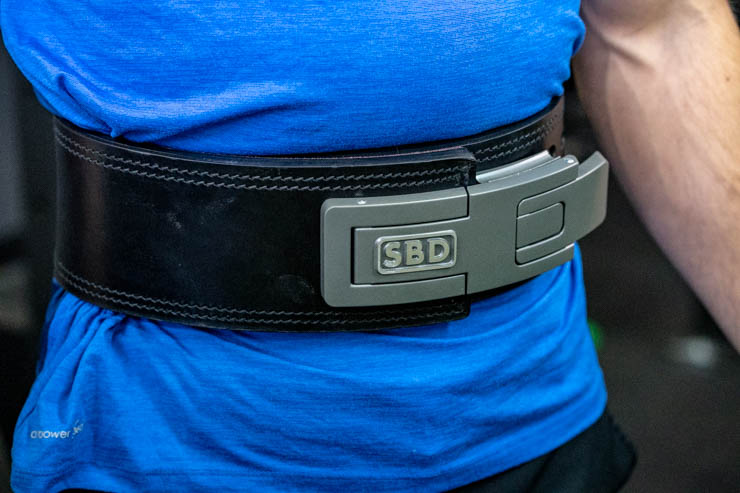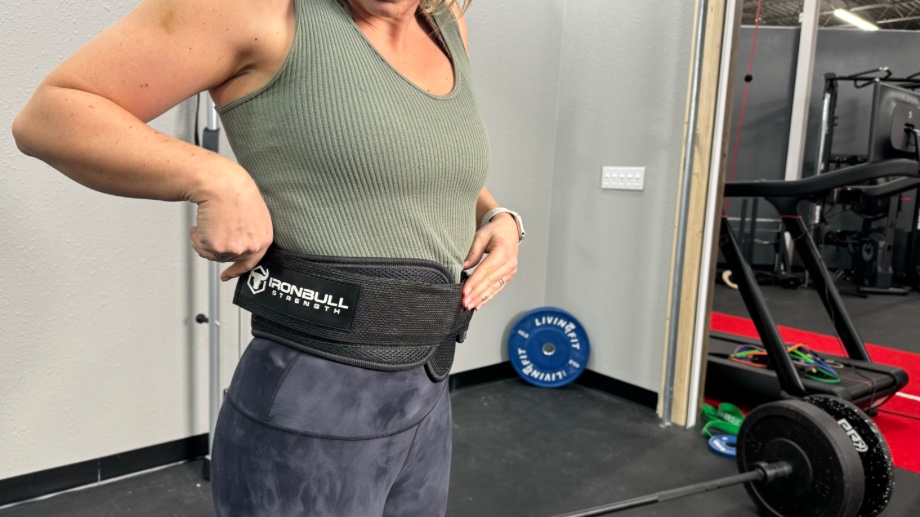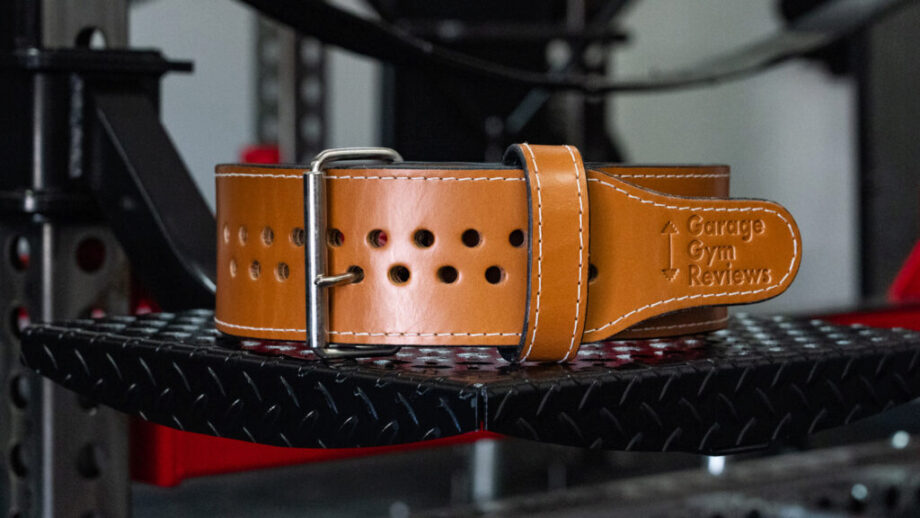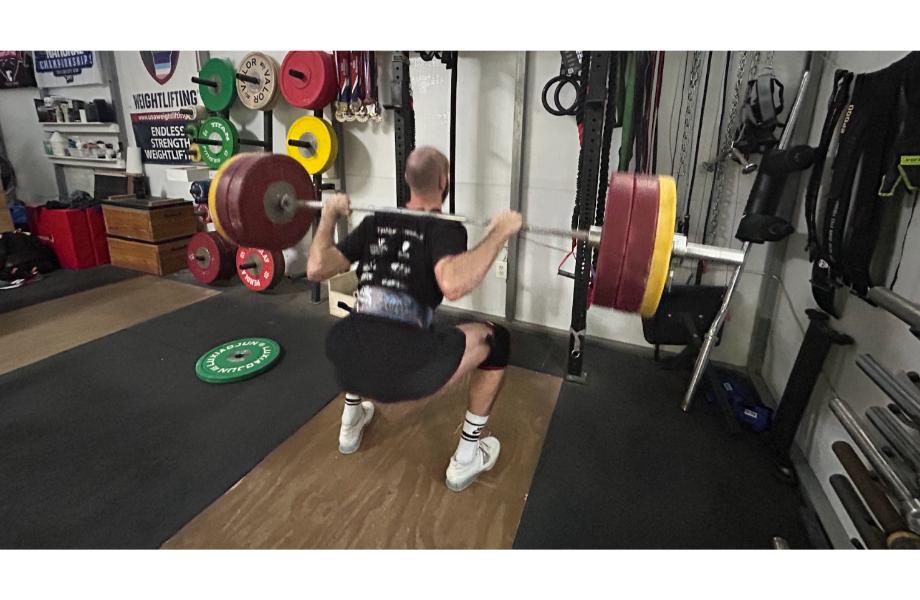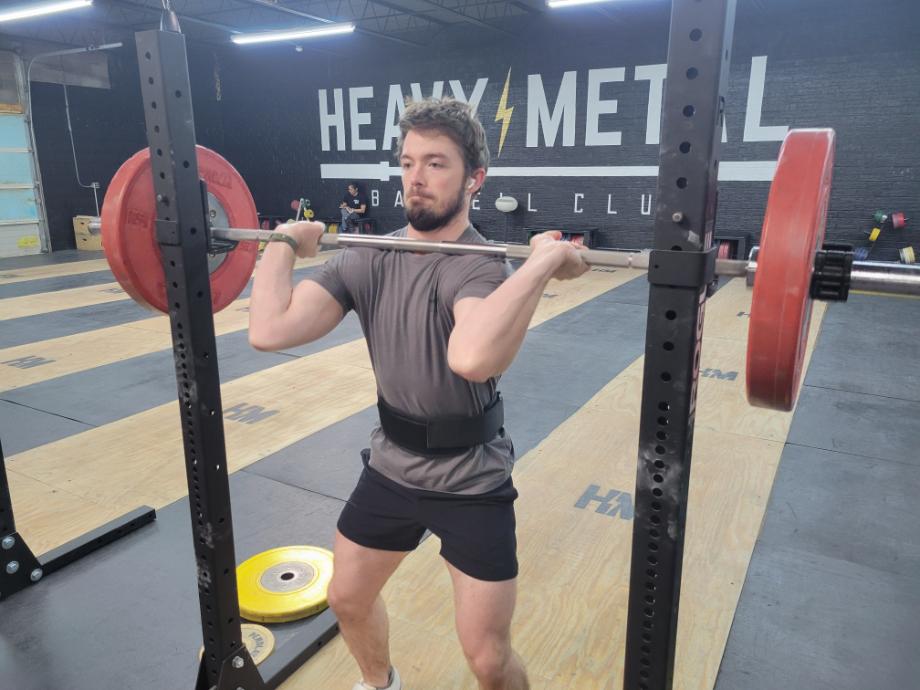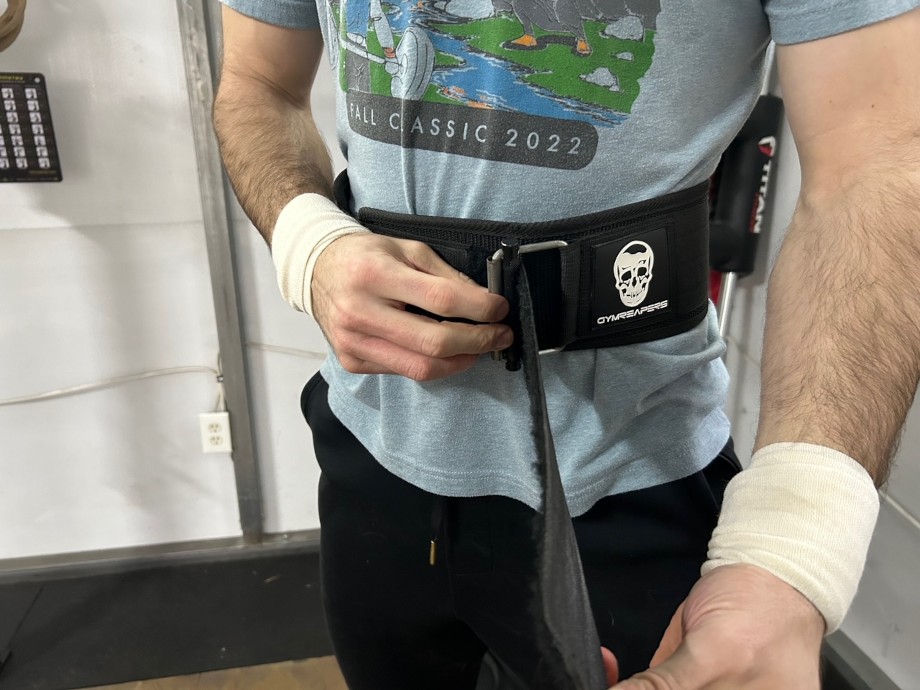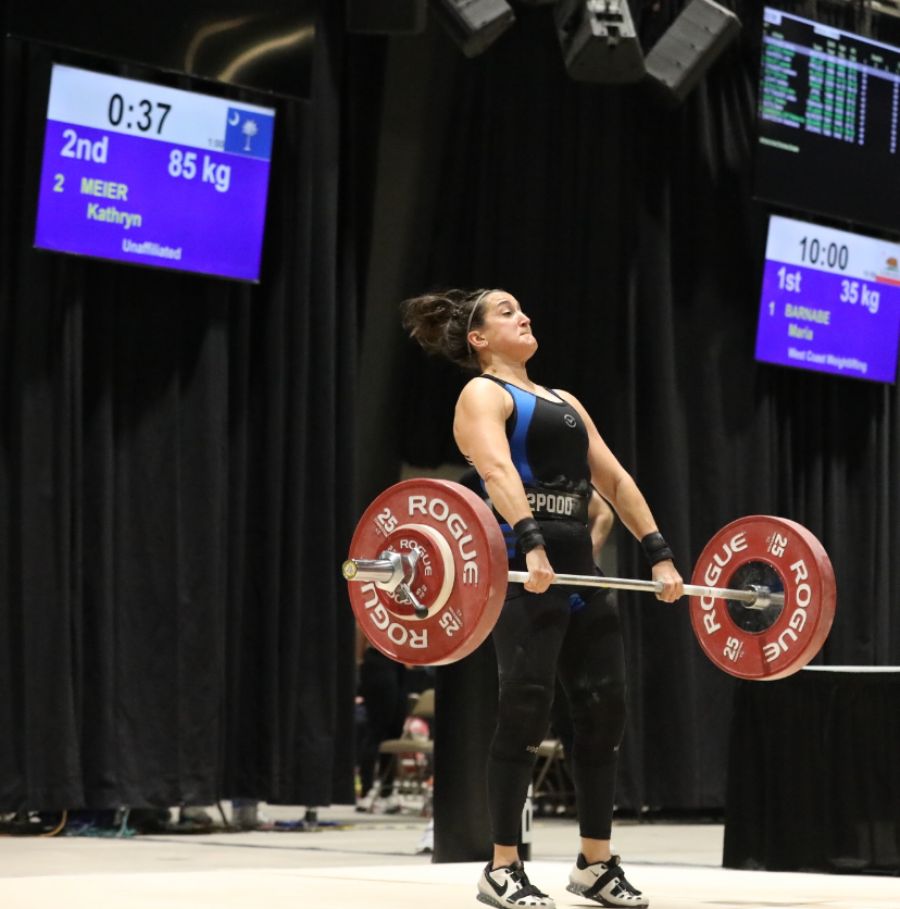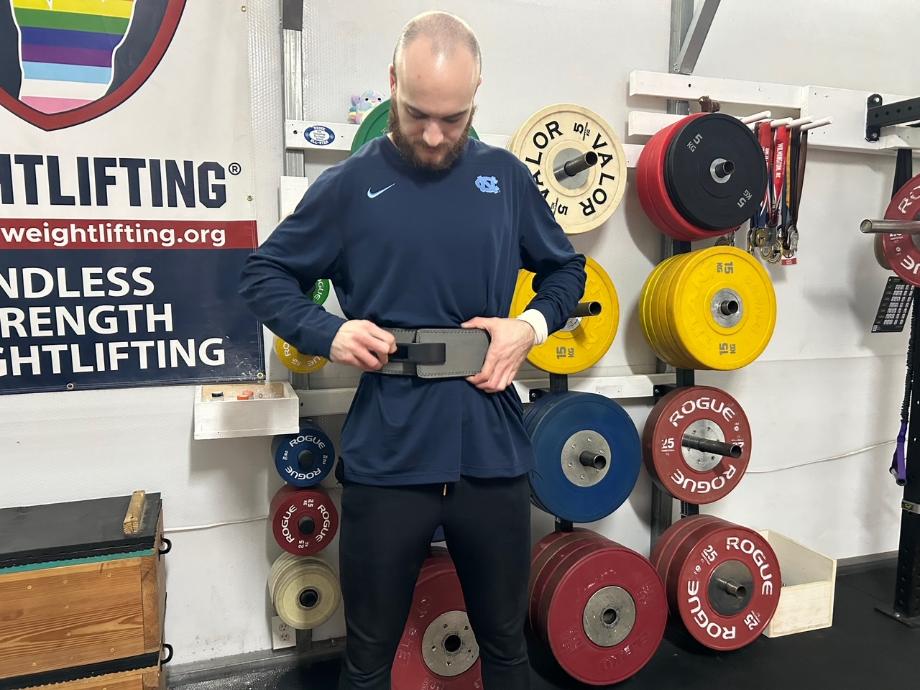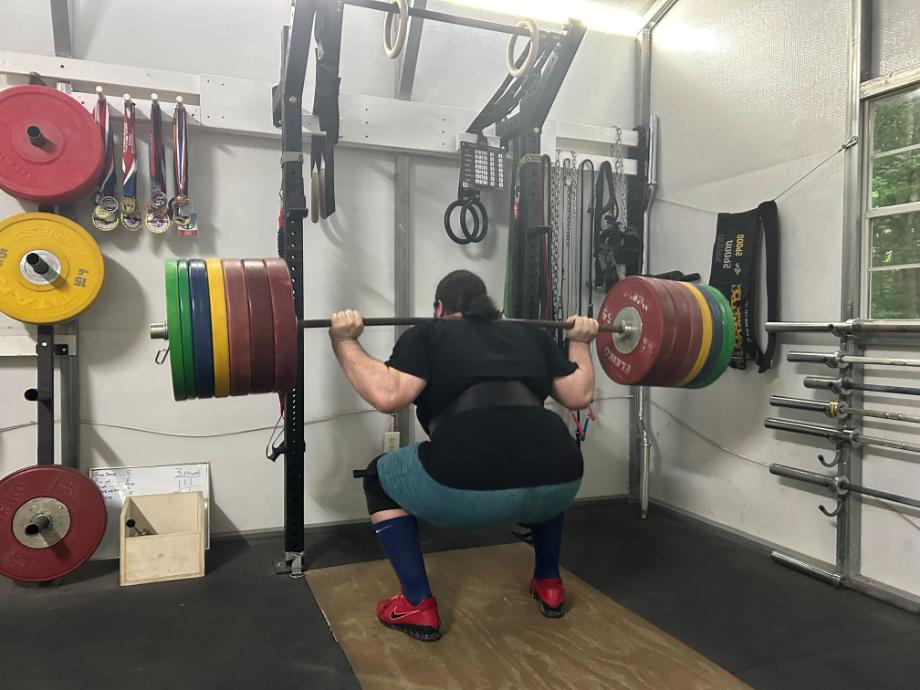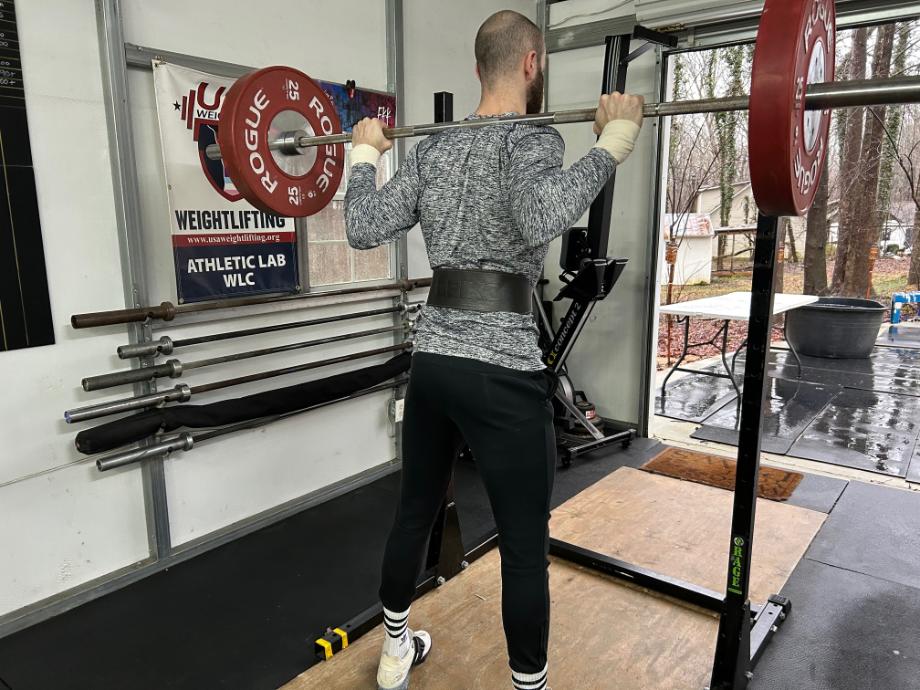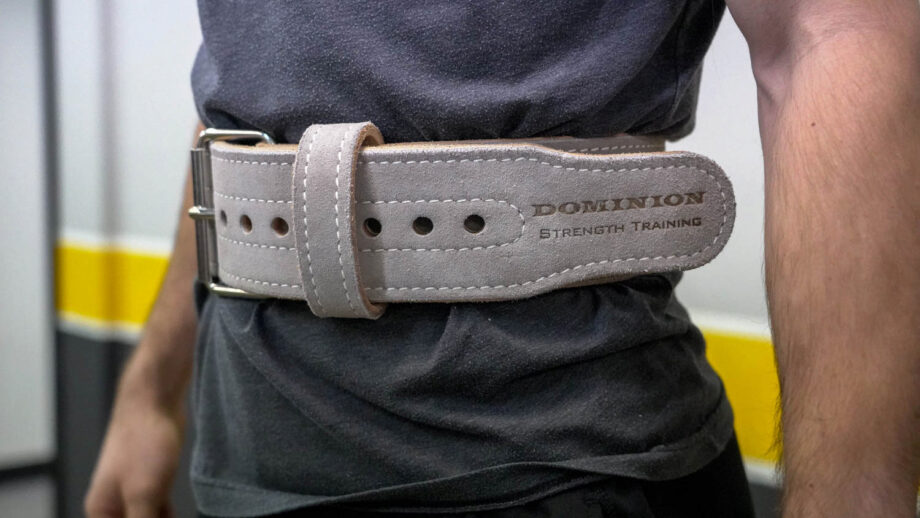We test and review fitness products based on an independent, multi-point methodology. If you use our links to purchase something, we may earn a commission. Read our disclosures.
Weightlifting belts are one of the most debated pieces of support gear for working out. Some people swear by the lifting belt, while others argue going raw is best.
Undoubtedly, when used in the right conditions, a weightlifting belt can be a beneficial piece of equipment for your workouts. By adding intra-abdominal pressure and support to your back, a weightlifting belt can increase your stability while lifting and inevitably help you lift heavier weight.
After many years of training with and without a belt—and fielding questions about weightlifting belts and when to wear one—I put together a guide to the best weightlifting belts, plus everything you should know about how and when to use a weightlifting belt.
In the name of blatant honesty, this is one of the hardest product roundups I’ve ever created. I thought our guide to the best Olympic barbell was tough, but this guide takes the cake. This category might have more products than any other home gym equipment category we’ve covered yet, but we’ve tested dozens of weight belts and used many for years on end.
We’ve consulted with some of the strongest athletes in the world and observed elite competitors and the belts they use. We even have an Olympian on our team. Between our expertise in the fitness equipment industry and our hands-on testing process, we’ve created the most thorough guide to weightlifting belts you’ll find online, rating each belt on features like:
- Durability and construction
- Versatility
- Comfort and sizing
- Adjustability
- Overall value
Best Weightlifting Belts for 2024
- Best Overall Lifting Belt: SBD Lever Belt
- Best Nylon Weightlifting Belt: Iron Bull Strength 6” Nylon Weight Belt
- Best Leather Weightlifting Belt: Rogue Faded 4” Lifting Belt by Pioneer
- Best Weightlifting Belt for Squats: Bells of Steel Lever Belt
- Best Weightlifting Belt for Beginners: Warm Body Cold Mind 4” Nylon Weightlifting Belt
- Best Budget Weightlifting Belt: Gymreapers Quick-Locking Weightlifting Belt
- Best Weightlifting Belt for CrossFit: 2POOD Straight Weightlifting Belt
- Best Lever Belt: Gymreapers Lever Belt
- Best Powerlifting Belt: REP USA Premium Leather Lifting Belt
- Best Olympic Weightlifting Belt: Eleiko Olympic Weightlifting Belt
- Best Hybrid Weightlifting Belt: Element 26 Hybrid Leather Weightlifting Belt
- Best Deadlift Belt: Dominion 3” Leather Belt
Best Overall Lifting Belt: SBD Lever Belt
Good for: Those wanting a durable and strong powerlifting belt
Best Overall
SBD Belt
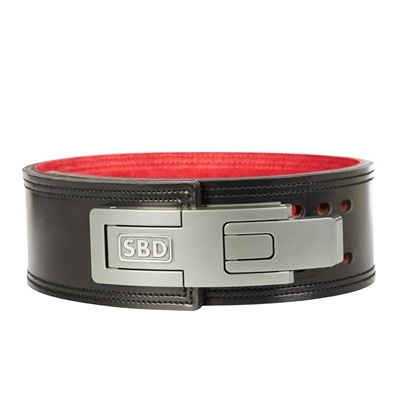
Product Highlights
- Meets numerous powerlifting regulations
- Patented gliding lever closure system is secure and easy to use
- Sizes up to 5XL
- Durable
Pros & Cons
Pros
- Complies with numerous powerlifting standards
- Patented gliding lever closure system
- Easy to adjust
- Sizes up to 5XL
Cons
- Expensive
- Red suede may rub onto light-colored clothes
- No color options
Bottom Line
One of the most iconic weightlifting belts that, in our opinion, is worth the price.
Best Nylon Weightlifting Belt: Iron Bull Strength 6” Nylon Weight Belt
Good for: Those wanting a flexible nylon lifting belt with plenty of lumbar support
Best Nylon
Iron Bull 6” Nylon Weight Belt
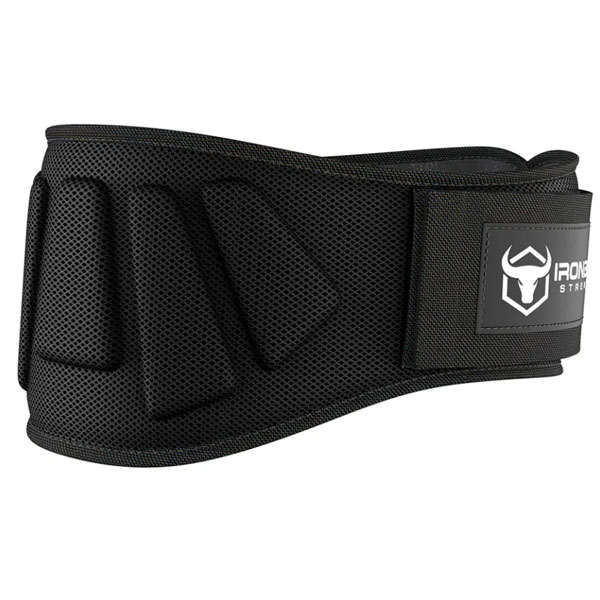
Product Highlights
- Constructed from premium nylon materials for durability
- Provided support and comfort during functional training
- Reinforced design and extra padding for back support and spinal stabilization
- Secure double-prong buckle closure for easy adjustment
- 6-inch width
Pros & Cons
Pros
- Secure buckle
- Padded
- Good level of support
- 6 color options
Cons
- Unbuckling quickly may be difficult
Bottom Line
The Iron Bull 6" Reinforced Padded Lifting Belt offers a good level of support and comfort during functional training and weight training exercises. It features a reinforced design, extra padding, a secure double-prong buckle for easy adjustment, and a six-inch width
Best Leather Weightlifting Belt: Rogue Faded 4″ Lifting Belt by Pioneer
Good for: People who dabble in different types of lifting and go heavy on a variety of lifts
Best Leather Belt
Rogue Faded 4″ Lifting Belt by Pioneer
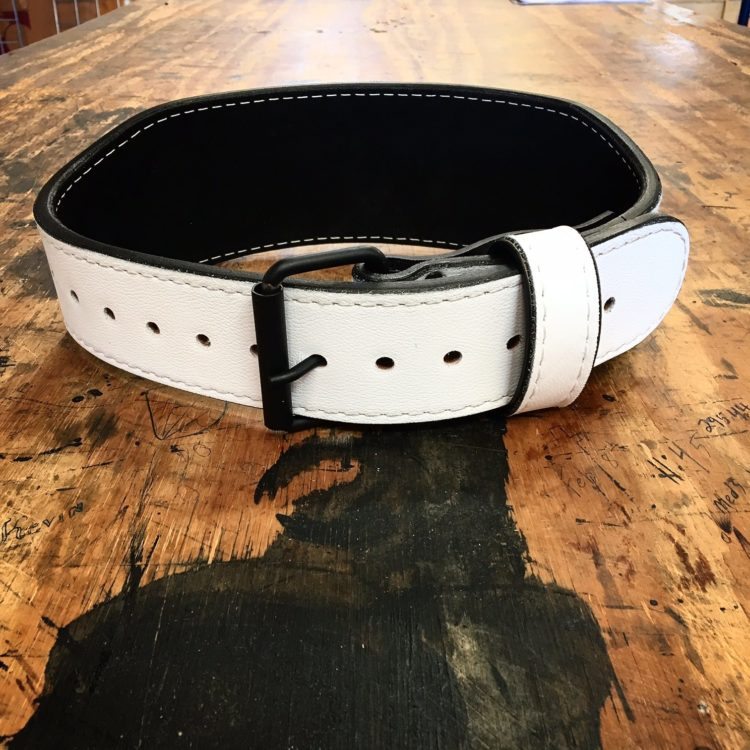
Product Highlights
- 4″ in the back
- Tapers to 2.5″ on sides and front
- Durable
- High-quality leather
- Comfortable
Pros & Cons
Pros
- 8.5-millimeter thickness allows for versatility
- Half-inch adjustments instead of the usual 1 inch
- Old-school faded leather design
- Made in the U.S.
Cons
- Might not be thick enough for powerlifters
- Not inexpensive, but not overpriced either
- Tends to run larger than standard belt sizing
Bottom Line
A high-quality leather belt made by Pioneer Fitness in collaboration with Rogue Fitness.
Best Weightlifting Belt for Squats: Bells of Steel Lever Belt
Good for: Those who need a sturdy belt that’s fit for the King of All Lifts
Best for Squats
Bells of Steel Lever Belt
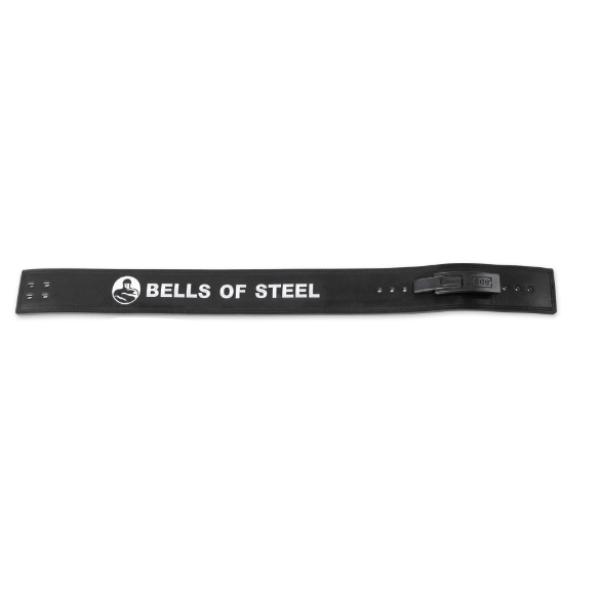
Product Highlights
- Supportive leather belt
- Requires a break-in period
- Available in sizes S-XXL
- Good price for the quality
Pros & Cons
Pros
- Great price for the value
- Five sizes (S-XXL)
- Runs true to size
- Great for heavy lifts
Cons
- Only two designs
- Uncomfortable at first
Bottom Line
The Bells of Steel Lever Belt is a strong, well-priced weightlifting belt that's designed for those PR days. The leather belt helps support proper squatting and deadlifting form by encouraging the user to brace, which our testers say makes it more comfortable while in use.
Best Weightlifting Belt for Beginners: Warm Body Cold Mind 4” Nylon Weightlifting Belt
Good for: New lifters wanting an inexpensive belt for a variety of training modalities
Best for Beginners
Warm Body Cold Mind 4″ Nylon Weightlifting Belt
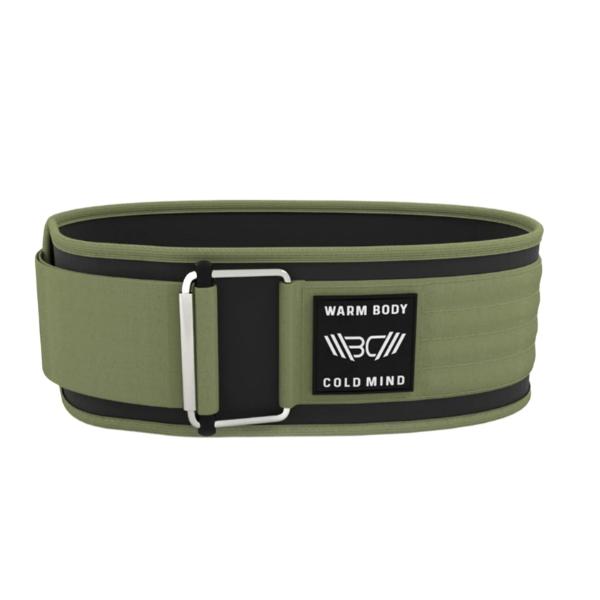
Product Highlights
- Self-locking belt
- Premium nylong
- Five sizes
- Designed by champion weightlifter Oleksiy Torokhtiy
Pros & Cons
Pros
- Affordable
- Five sizes
- Self locking
- Four colors
Cons
- Velcro may fray over time
- Can't be returned once worn
Bottom Line
The Warm Body Cold Mind weightlifting belt is an affordable option designed by world champion weightlifter Oleksiy Torokhtiy, and has been tested and trusted by Olympians on our staff.
Best Budget Weightlifting Belt: Gymreapers Quick-Locking Weightlifting Belt
Good for: Lifters who need an effective, but budget-friendly weightlifting belt
Best Budget
Gymreapers Quick-Locking Belt
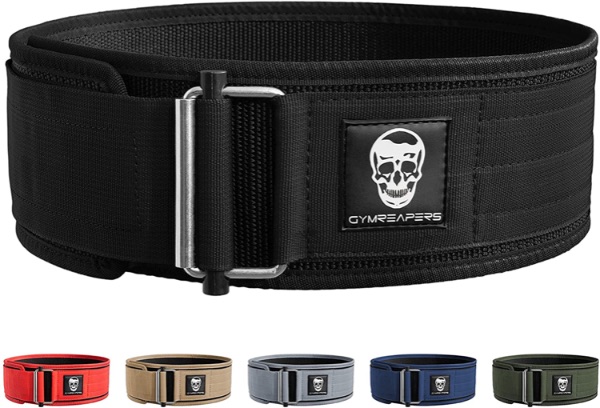
Pros & Cons
Pros
- Easy to get on and off between exercises
- The rolling buckle and velcro let you really dial in the pressure you need
- Material is comfortable and does not cut into your skin
- Uniform width across for evenly distributed intra-abdominal pressure
Cons
- Some users find the belts run small
Bottom Line
If you are on the hunt for a great weightlifting belt, this Quick-Locking Belt easily adjusts to provide maximum support while hitting your heavy lifts.
Best Weightlifting Belt for CrossFit: 2POOD Straight Weightlifting Belt
Good for: Functional fitness enthusiasts who love putting together the perfect workout outfit
Best for CrossFit
2POOD Straight Belt
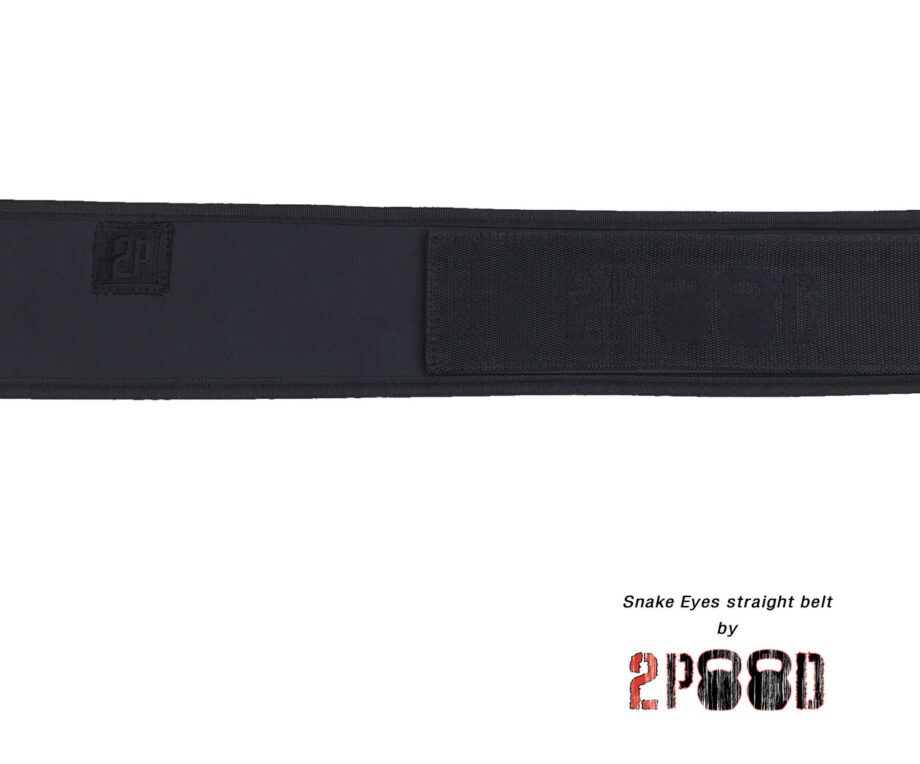
Product Highlights
- Great for CrossFit
- 4″ straight belt
- Velcro closure system
- Easy to use
- High-quality nylon construction
Pros & Cons
Pros
- High-quality nylon lasts for years
- Tons of color and design options
- Straight cylindrical design is great for CrossFit lifts
- Worn by many elite CrossFit athletes during training and competition
Cons
- Very firm for a nylon belt (more so than most)
- Almost uncomfortable at first, but breaks in quickly
- Durable, but still not as durable as leather weightlifting belts
Bottom Line
A functional weightlifting belt suitable for CrossFit or functional fitness workouts.
Best Lever Belt: Gymreapers Lever Belt
Good for: Powerlifters needing a strong lever belt for a relatively low price
Best Lever Belt
Gymreapers Lever Belt
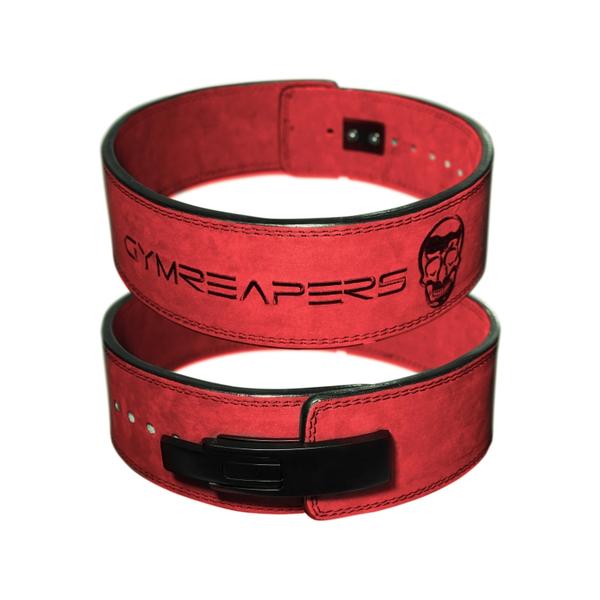
Product Highlights
- USPA-approved
- Two width options
- Rounded edges
- Double stitching
Pros & Cons
Pros
- High quality leather
- Suede interior to whisk away sweat
- It has gone through rigorous testing before being released
- Double stitching to increase durability
- Rounded edges for comfort
- USPA approved
Cons
- Cleaning the belt is a bit of a process requiring differing techniques for the outside and inside of the belt
- Will need a few wears to break it in
- Comes unassembled
Bottom Line
If you are looking for a durable yet functional belt to assist you in heavier lifts such as deadlifts, squats and bench, the Gymreapers Lever Belt is a great option.
Best Powerlifting Belt: REP USA Premium Leather Belt
Good for: Those who want a durable weightlifting belt that can be used to train for and compete in powerlifting competitions
Best Powerlifting Belt
REP USA Premium Leather Lifting Belt
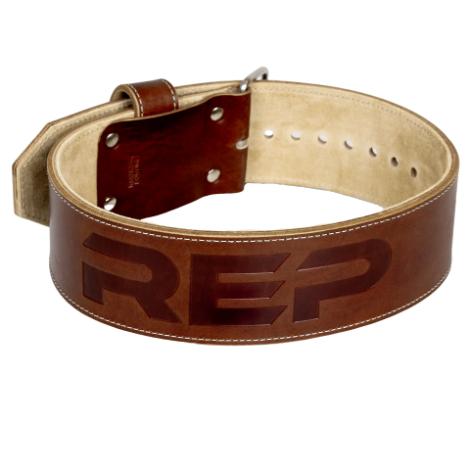
Product Highlights
- 4” wide premium leather belt
- 10 mm thick
- Vegetable tanned leather
- Stainless steel buckle with nickel-plated brass rivets
- Sizing from small to 3X-large
Pros & Cons
Pros
- Quality material
- Broad range of sizes
- Compliant with IPF and USAPL standards
Cons
- Expensive
- Only two colors available
Bottom Line
The REP USA Premium Leather Lifting Belt is made from vegetable-tanned leather, known for its strength and durability. At 4 inches wide and 10 millimeters thick, this durable belt is certified for USAPL and IPF powerlifting competitions as well. The belt doesn’t taper at the front, however, meaning it’s not an ideal leather belt for Olympic weightlifting.
Best Olympic Weightlifting Belt: Eleiko Premium Olympic Weightlifting Belt
Good for: Weightlifters wanting a competition-certified weightlifting belt
Best Olympic Weightlifting Belt
Eleiko Premium Weightlifting Belt
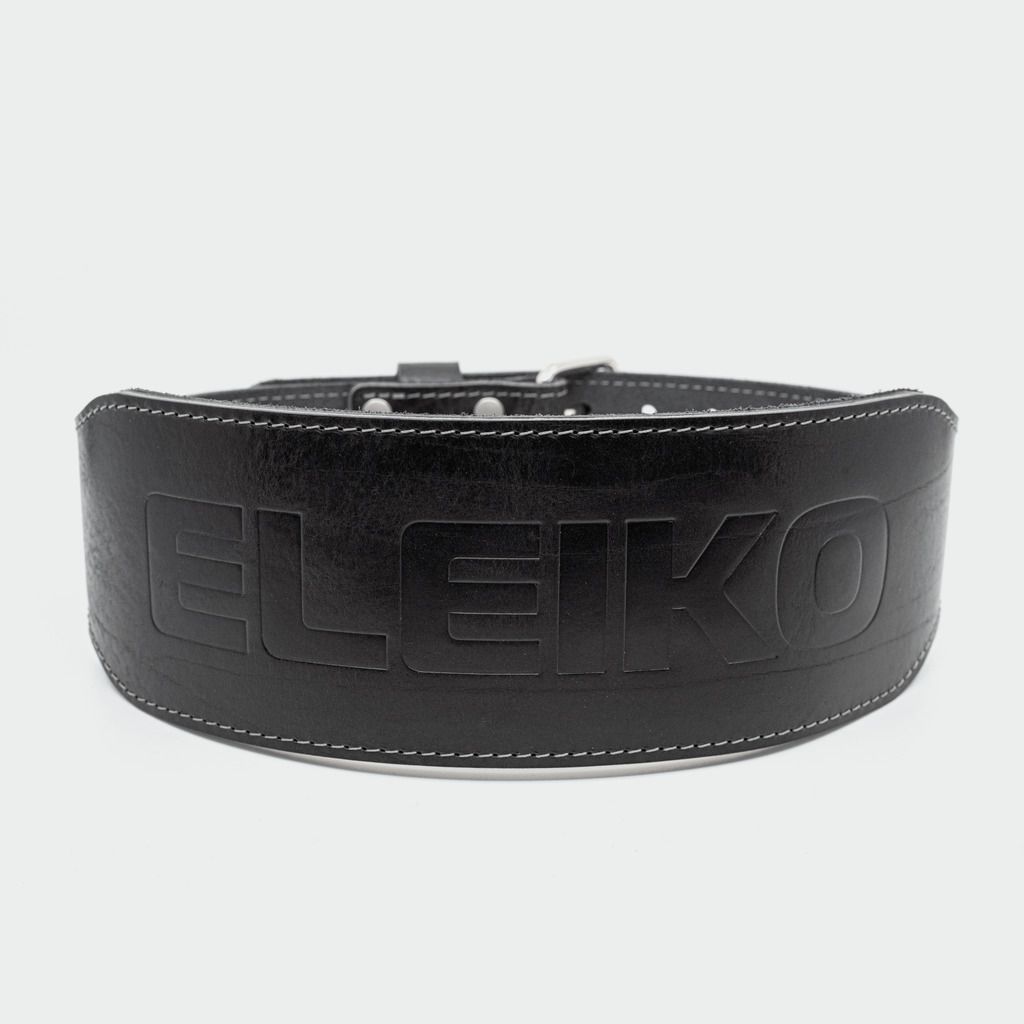
Product Highlights
- Handcrafted in Sweden
- Vegetable-tanned leather
- Under $150
- Five size options
- Competition-certified
Pros & Cons
Pros
- Beveled edge and tapered cut specific for Olympic lifting
- Competition certified
- Not very expensive for being an Eleiko product
Cons
- Thick leather makes for a very rigid feel
- Tapered design isn’t for everyone
- Doesn’t break in easily
Bottom Line
One of the best weightlifting belts offered at a modest price point.
Best Hybrid Weightlifting Belt: Element 26 Hybrid Leather Weightlifting Belt
Good for: Anyone who wants a belt that’s good for multiple training styles
Best Hybrid Weightlifting Belt
Element 26 Hybrid Leather Weightlifting Belt
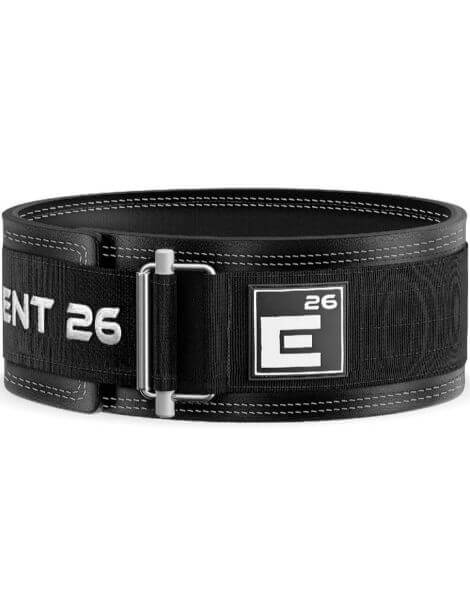
Product Highlights
- 5 sizes available
- Self-locking buckle
- Provides comfort and versatility
- 100% premium leather
- Heavy-duty stitching
Pros & Cons
Pros
- Helps you to feel solid anytime you lift
- High-quality product that is backed by even better customer service
- The belt stays securely in place with a self-locking buckle
- Designed to help you crush your PRs
Cons
- Some customers felt that it was a little bit heavy for CrossFit-style workouts
- Leather can rub a little when lifting
Bottom Line
If you do a lot of weightlifting and tend to lean toward heavier weights, you are going to want to try this belt. The Element 26 Hybrid Leather Weightlifting Belt gives you a lot of options to make sure that the pressure distribution and breathability of the belt are ideal for you so you can focus on your training and goals.
Best Lifting Belt for Deadlifts: Dominion 3″ Leather Belt
Good for: Athletes who max out on deadlifts often
Best Deadlift Belt
Dominion 3-Inch Leather Weightlifting Belt
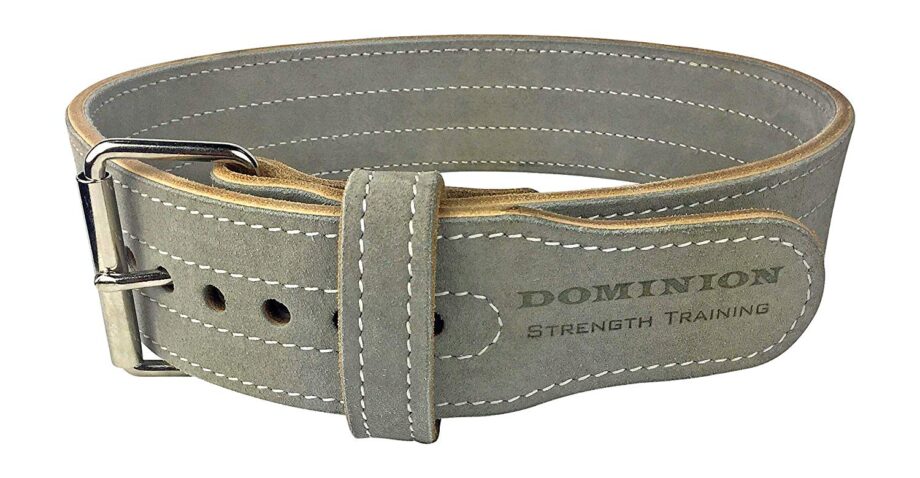
Product Highlights
- Designed for deadlifts and squats
- Lifetime warranty
- Breaks in quickly
- Comfortable
Pros & Cons
Pros
- Designed specifically for deadlifts and squats
- No-risk lifetime warranty
- 10mm thickness
- Breaks in quickly
- Suede leather feels soft and comfortable
Cons
- Three-inch width might not be enough for taller people
- Adjustability is in 1-inch increments
- Single-prong closure
Bottom Line
A weightlifting belt that's specifically designed to offer support during deadlifts and squats.
Other Weightlifting Belts We Wore or Researched
This belt is basically the same as the REP 4” Premium Lifting Belt, but it’s USA-made, so it’s more than double the price. It’s a great belt, but REP’s sealed edges and double stitching give it a leg up against the Ohio Lifting Belt. The leather of the Ohio Belt is much more pliable and stretches over time, the edges are single stitched making them prone to breaking and there is no edge dressing which causes them to delaminate over time. If you want a Rogue Fitness belt, we recommend paying the extra money for the Pioneer Cut.
Created in partnership with the winningest male CrossFit Games champion Mat Fraser (with five titles, just ahead of Rich Froning’s four titles) the Rogue USA Nylon Belt is a flexible and durable weight belt, although it’s going to be more expensive than the imported Rogue 5” Nylon Weightlifting Belt.
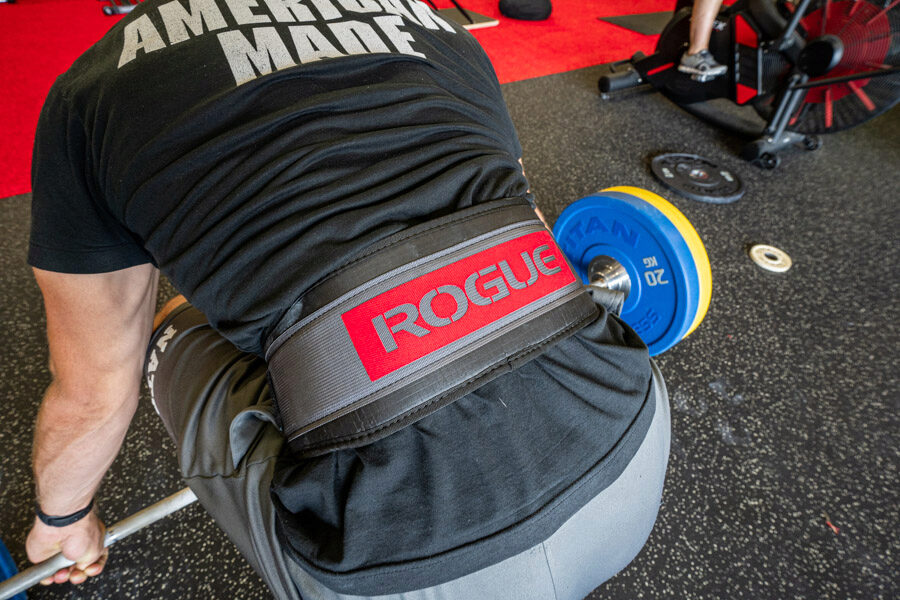
Major Lutie Weightlifting Belt
This is an $80 leather belt that comes in three sizes. That sounds like a steal, but is it? Our tester, Lindsay Scheele, lead reviewer on Garage Gym Reviews Everything, thought that interior of it was nicely padded and offered a lot of lower back support because of its cushioned padding on the back. When she compared this to other leather belts, however, her main concern is the longevity of the Major Lutie belt. The metal pieces to secure the belt closed seemed rather cheap.
Element 26 Self-Locking Weightlifting Belt
This self-locking velcro belt from Element 26 allows for quick adjustments due to its quick release buckle, making it great for functional fitness workouts. While many customer reviews state the budget-priced belt’s velcro can fray quickly, GGR performance editor and frequent lifter Anthony O’Reilly, CPT, CNC, had no issues with it in over a year of testing.
We think this is a phenomenal powerlifting belt as well. It’s the same as the Dominion 3” Lifting Belt, which we recommend for deadlifts specifically, but with another inch in width.
Inzer belts are great belts. I’ve had an Inzer Forever Buckle Belt that was passed down from my father to me for over a decade now. My father used the belt for two decades before me. This means I still to this day use a 30-year-old belt, and aside from some minor abrasions and fading, it still works like it did when it was purchased. The reason Inzer belts didn’t beat out our top pick is because of some misinformation that doesn’t necessarily make the belt bad, but worse than the competition. For instance, they say the layers aren’t glued together, but they are.
These use the same leather construction as the buckle belts but instead have a lever. The lever is a nice, chrome-plated lever, however, it isn’t adjustable like SBD’s which is why we’re not recommending it for most people. However, it is much cheaper.
Titan Support Brahma Power Belt
The Titan Brahma Belts are high-quality, USA-made weightlifting belts. They use strong materials and offer customization options with their belts. They are triple-stitched and use two pieces of sole leather and two pieces of suede leather that are glued and stitched together. The biggest issue with the belts that we’ve heard from others is that they don’t meet federation specs, although their site says they’re IPF-approved. We definitely like these belts, but we don’t think they’re better than our other picks at their price points.
Best Belts are indeed some of the best powerlifting belts that are available. They use great materials, are IPF-approved, and they come with a lifetime warranty. These belts stand up to Pioneer belts in terms of quality and longevity, but for the price, you may as well get the Pioneer Cut.
Schiek was one of our previous picks for the best nylon weightlifting belt, and we still think it’s a great option but the price has increased around $50 depending on which style you purchase (Amazon offers it in quite a few color options). There are more budget-friendly options that offer about the same level of support and comfort.
The Dark Iron Fitness Leather Belt
This is another belt that was previously recommended by us, but recent price increases (it’s about $40-50 on Amazon) make it more expensive than some of our top picks. It’s not that this is a bad belt, but it’s not that much better than our current budget pick. It is made of genuine cowhide leather, so if that’s important to you this is a great pick.
Harbinger 5-Inch Weightlifting Belt
Harbinger is a well-known name in the weightlifting industry, especially when it comes to support gear like gloves and weightlifting belts. We’re sure someone on our team has tried out these belts, but we don’t have much to say about it.
Harbinger 4-Inch Weightlifting Belt
Same as the belt listed right above, but it’s 4 inches in thickness instead of 5. Better for smaller lifters.
How We Tested The Weightlifting Belts
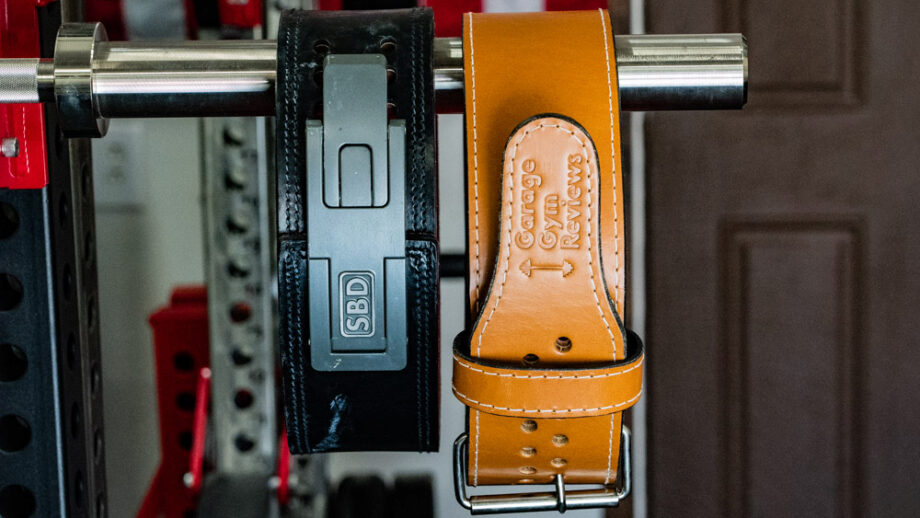
As usual, we started by simply scouring the internet and trying to compile a list of every belt in an Excel spreadsheet. Here’s a small portion:

In addition to relying on Google for help, we also reviewed what had been written on the home gym subreddit, asked for opinions from our Home Gym Community Facebook Group (more than 122K strong as of this writing) as well as consulted with some of the strongest people in the world to get their opinion on the best weightlifting belt they’ve ever used.
Once we got the lay of the land, we took stock of what we already had on hand (nearly 20 different belts) and ordered others that we felt were needed for the comparison.
We used all of the above weightlifting belts for any and all lifts a belt might be used for, including heavy deadlifts and squats, clean and jerks, and snatches. We also wore them during higher-volume workouts and workouts with a variety of movements to see how they fared for general comfort and versatility.
Some key factors we evaluated during testing include ease of closure, adjustability, and, of course, support.
To simulate how weightlifting belts might be treated after big lifts and tough workouts, we threw them, smashed them, and stuffed them in bags. All of this drove our overall ratings of each belt.
We measured each belt for thickness and width accuracy to see how closely the actual product lined up with the stated dimensions online.
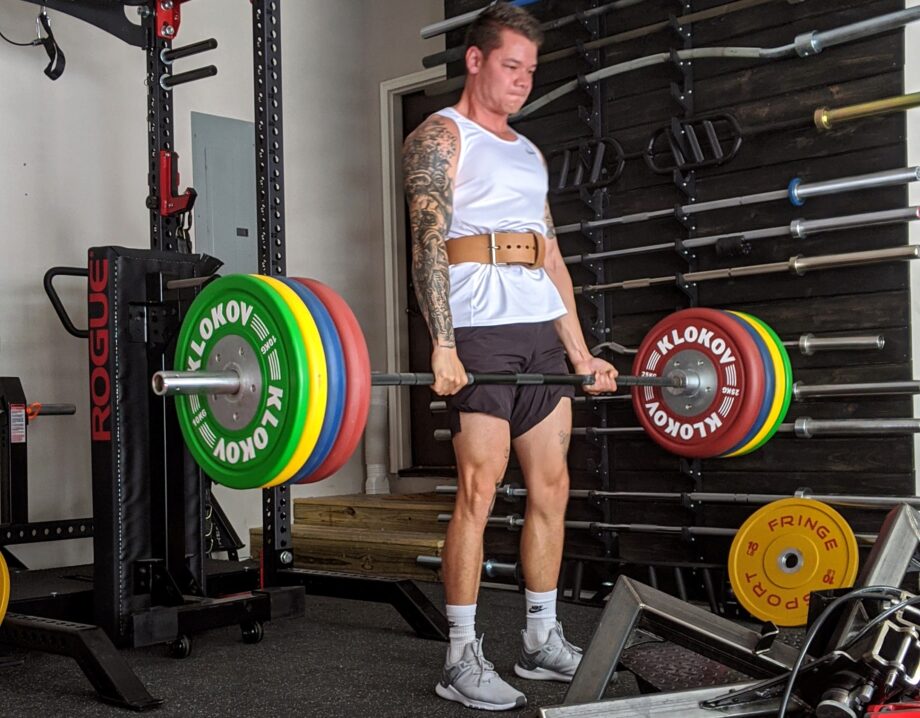
Benefits of Weightlifting Belts
Wearing a weightlifting belt is not a requirement for weight training. In fact, I’d go so far as to say you don’t need to wear a weightlifting belt at all if you’re not training at near-maximal (meaning above 80% of your max for a specific rep range). It’s actually really important to master beltless training and learn how to engage your core without the support of a weightlifting belt.
That said, belts do have their place. When lifting heavy weights, wearing a weightlifting belt provides extra support for your entire midsection, which includes your abdominal muscles and back muscles. It’s also worth noting that some competitive athletes wear belts even during light lifts to ensure their technique remains the same all the time. People with prior injuries can also benefit from wearing belts even at light loads.
RELATED: Best Back Exercises
By increasing intra-abdominal pressure1, a weightlifting belt serves as a reminder to brace your core, and it also gives you an object to brace your core against. However, a weightlifting belt is not a replacement for core engagement. Instead of thinking of a belt as a necessity for core bracing, think of it as a physical cue to tighten your core. A belt should always be an indirect, not direct, support during your lifts.
Many beginners in CrossFit, powerlifting and Olympic lifting assume that wearing a weightlifting belt automatically allows them to lift more weight. This is not so. Weightlifting belts help you maintain better technique and stability during lifts at very high loads, thus increasing the chance that the lift is successful. I get that that looks like “belt equals more weight,” but again, it’s smartest to view weightlifting belts as a support tool, not as a crutch.
People also assume that using a belt protects your lower back and although this is somewhat true it’s not entirely correct. What a belt actually does is create pressure to brace your core against. When you brace your core, you’re less likely to suffer a back injury, so by default, weightlifting belts assist in the protection of the spine (but the real protection is core engagement).

Do I Need a Weightlifting Belt?
This is one of the most controversial questions in strength training, and the answer is that nobody really needs one. Yes, wearing one does take some stress off the midsection but there are many trainees who find it unnecessary.
If you’re someone who plans on competing in weightlifting, powerlifting, or CrossFit, then we recommend you invest in one. You’ll be lifting a lot of weights during your prep, and taking care of your body will ensure you feel ready to go come the big day.
If you’re someone who lifts just as a hobby, that’s going to come down to preference. Belts don’t make you stronger or allow you to lift more weights, but they can be a great aid if progressive strength is one of your goals (which we assume it is, since you’re going to the gym on a regular basis).
That said, you should work on perfecting your lifting form before you get a weightlifting belt. A belt won’t do you many favors if your technique needs adjustment. This means a belt should also be avoided by beginners, who should dedicate time to learning proper form before trying to lift anything heavy anyway.
If you’re someone who sticks to machine workouts, there’s a 99% chance you’ll be OK without one.
What to Consider Before Buying a Weightlifting Belt
Ask yourself these few important questions before taking the plunge and purchasing a weightlifting belt.
Do you know how to engage your core?
Full stop. Mike Masi, doctor of physical therapy and Garage Gym Reviews expert panelist, says if you’ve never learned to brace your core without a belt, you should definitely do that before buying and using a belt.
Otherwise, he says, “Your belt might become more of a crutch than a support tool over time. It’s important to know how to engage your core to use a belt properly and get the most out of it, anyway.”
Do you lift weights regularly?
If your weekly workouts consist of more jump squats than barbell squats, you probably don’t need a weightlifting belt. Workout styles such as high-intensity interval training (HIIT), circuit training, and other high-volume, cardio-heavy training don’t typically require a belt. (This is not to say CrossFitters shouldn’t buy a belt, because CrossFit encompasses cardio-heavy training in addition to lifting weights.)
Do you regularly train at near-maximal loads?
If you do lift weights on a regular basis, how often are you lifting heavy and how heavy are you going? Heavy is relative, but if you never lift more than 80% of your max at a given rep range, you may not even need a belt. For instance, marathon runners who are using lifting as a way to cross-train probably wouldn’t benefit from a weightlifting belt, seeing as marathon-specific weight training involves high rep ranges (usually 8 to 20 reps per set) at lower loads.

How to Choose the Best Weightlifting Belt for You
Several factors go into the decision to buy a specific weightlifting belt. These are some of the most important things I encourage people to think about before clicking the buy button.
Your Sport
Your primary training style will largely dictate the best weightlifting belt for you. If your workouts mainly consist of Olympic lifting, you’ll need a different belt than someone whose workouts mainly consist of CrossFit or powerlifting.
In general, less rigidity is better for functional fitness-style training, while more rigidity is better for heavy lifting. Also, consider the closing mechanism: If you’re moving quickly from heavy deadlifts to pull-ups and back to deadlifts, you’ll want to minimize the time spent buckling and unbuckling your belt.
Budget
Weightlifting belts span a rather large price range. You can find decent-quality belts for under $50, while some premium belts from brands like Eleiko and SBD can run you more than $200. Before deciding on a number to spend, consider how much you’ll use the belt and your goals for it. If you don’t plan to train to become an elite weightlifter or powerlifter, lifting near-maximal loads multiple days a week, you probably don’t need to drop hundreds on a belt.
Materials
Most weightlifting belts are made either from leather or nylon. You may come across different blends of materials including cloth coverings and foam inserts, but the base pretty much always comes down to leather or nylon. Leather is often considered the gold standard for weightlifting belts, but it isn’t the best material to use in every situation. Nylon works well for higher volume lifting and in functional fitness settings.
If you do choose to buy a leather weightlifting belt, look out for fillers and stiffening agents that might affect the performance of the leather over time. Be sure to also read customer reviews about the break-in period and how the belt molds to the body, as this is essential to enjoying a leather weightlifting belt over the long term.
Belt Thickness and Width
One of the main questions I get about weightlifting belts is how thick they should be. I say leave this up to personal preference. Leather belts will naturally be thicker than nylon belts, thus providing more rigidity.
However, we’re less concerned with the actual thickness of the belt (unless you’re a competitor) and more concerned with how the stated thickness lines up with the actual thickness. I’ve seen many belts listed with a specific thickness that doesn’t line up with the product in hand. If you are a competitor, you should pick a belt that complies with the official rules of your sport. The IWF standard is that no belt can exceed 12 millimeters; the IPF states that 13 millimeters are the max thickness for belts.
Also, note that belt thickness isn’t the same as belt width. Thickness refers to how many millimeters deep the material is, while width refers to how many inches wide the belt is at its widest point. Weightlifting belts pretty much fall into the range of two to six millimeters thick and three to six inches wide.
When looking at width, the biggest factor is the length and size of your torso. People with longer torsos will generally benefit more from a wider belt, while shorter or more petite people may find wider belts uncomfortable and even unusable.

Stitching and Gluing
The layers of the belt should, in most cases, be stitched when using leather. The more stitching, the better (up to a certain point). Most manufacturers typically use glue to prevent bubbling between the layers. The stitching itself should overlap to prevent the stitching from coming undone.
Hardware Finish
To prevent corrosion on your belt, look for a stainless steel buckle or some sort of finished hardware, such as zinc or chrome. This is especially important for home gym owners who may not be training in climate-controlled environments.
Customization Options
Can the belts be customized? If so, to what level and at what cost? What colors are available standard? While aesthetics might not be the main driver behind your purchase, we’re firm believers that you won’t wear or use something you don’t like the style of.
Flap Security
The piece of the belt that wraps around and has a prong inserted should be secured using rivets. This is the most secure system we’ve experienced, and it will prevent premature breaking of the belt.
Edge Work
Are the edges of the leather skived and dressed or are they just left with a sharp edge and no dressing to prevent separation? If it’s a nylon belt, how durable is the edge stitching? Fraying is a big no-no when it comes to weightlifting belts, as it reduces the longevity of the belt.
Break-In Period
If you’re interested in a leather belt, make sure to seek reviews that mention the break-in process. Some super tough leather belts may never fully break in or become more supple, which is a dealbreaker for many. Ideally, a leather belt will mold to your body over time for an ultra-comfortable and supportive fit. You can speed up the break-in process by rolling the belt up into a circle one way, massaging it, and then rolling it the other way—rinse and repeat.
Value
Does the cost of the belt line up with its features and quality? I don’t mind recommending a more expensive belt if the quality matches the price point. However, with so many decently priced, high-quality belts out there these days, it becomes difficult to recommend the more expensive options.
Keep an eye out for specific sales on products from many brands over the Black Friday weekend.
Warranty
What’s the length of the warranty on the belt? What does it cover? Are there so many stipulations that it’s not even worth filing a warranty claim? Will the company be around for your life to service the warranty? If you’re buying a $50 belt, this stuff may not be a huge deal, but if you’re buying a $200 belt, it sure is.
Fastening System
The fastening system, or how you secure the weightlifting belt to your body, is an important factor to keep in mind when deciding on the best weightlifting belt for you. Here are the different types of systems and what to keep in mind for each.
Buckle System
If a buckle and prong system is used, a roller buckle is ideal for allowing the tongue of the belt to easily slide in and out of the buckle and a seamless roller buckle is best of all.
Lever System
If the belt uses a lever system, look for reviews that mention how easy or difficult it is to secure the lever, as well as how much flexibility there is to allow for fluctuations in body weight.
Velcro
If Velcro is used, look for reviews that show how durable it is. If the Velcro starts to fry (wear out) after only a few uses, that’s an indication that the manufacturer may be using low-quality materials.
How to Wear a Weightlifting Belt
Follow these steps to wear your weightlifting belt the right way and get the most out of it:
- Position the belt around your waist. The bottom edge should sit above your hip bones to avoid creating air pockets, and so the belt makes contact with your abs, obliques, and back muscles.
- Take a small breath (don’t fully inhale) and tighten the belt. You want to tighten the belt to the point where it feels snug, but not like you’re going to bust the buckle. Leave some room for your stomach to expand when you inhale during your lift. A good rule of thumb is to tighten the belt until you can fit one finger between the belt and your back.
- Fasten the buckle, lever, or velcro and inhale fully to feel it out. If you feel any pinching or feel like you can’t breathe, you probably need to readjust.
Frequently Asked Questions About Weightlifting Belts
What does a weightlifting belt do?
Weightlifting belts increase pressure in and around your abdomen, as well as provide a physical cue to promote core engagement. These two functions make it easier to maintain a stable core and good lifting technique at very heavy loads, which means your chances of a successful lift increase and your chances of injury theoretically decrease.
Do weightlifting belts protect your back?
It’s thought that wearing a weightlifting belt may protect the spine when lifting heavy weights because the belt increases core muscle activation and stability around the spine. However, I’m not aware of any studies that look specifically at the injury risk reduction abilities of weightlifting belts (obviously, researchers would be hard-pressed to find an ethics board willing to let them potentially injure spines for science).
Do weightlifting belts help you lift more weight?
Belts aren’t magic. They don’t automatically allow your body to do something it isn’t ready for—you won’t increase your back squat one-rep max by 15 pounds just by throwing on a belt. However, because weightlifting belts increase core stabilization and core stability is a key indicator of proper lifting form, it’s safe to assume that most people will enjoy more success at heavy lifting when wearing a belt.
When should you use a weightlifting belt?
There’s no hard-and-fast rule about when to wear a belt and when not to, but many people reserve weightlifting belts for very heavy lifts. However, other people like to wear belts for high-volume workouts, too. It’s honestly a matter of personal preference and A-OK as long as you know how to brace your core on your own.
What’s the best material for a weightlifting belt?
Leather and nylon belts are standard. Between the two, one’s not necessarily better than the other, but they are better for different uses. Leather belts tend to be more rigid and therefore work best for powerlifting, strongman, and Olympic lifting. Nylon belts are often seen in the CrossFit and bodybuilding communities.
Will training with a weightlifting belt make my core weak?
Some people and self-proclaimed strength training purists avoid belts at all costs because they think belts are either a cheat or that belts will make their core weak. Neither of these ideas is true. If you use a weightlifting belt properly (that is, learn how to brace your core first and then use the belt as a cue and support), you won’t lose any core strength from wearing a weightlifting belt.
Do you need a weightlifting belt?
A weightlifting belt is not a necessity, but for many people it can help them engage their core during the big three lifts: bench press, deadlift, and squat.
References
- Lander, J. E., Hundley, J. R., & Simonton, R. L. (1992). The effectiveness of weight-belts during multiple repetitions of the squat exercise. Medicine and science in sports and exercise, 24(5), 603–609.
Further reading

Do double unders elude you no matter how much you practice with your jump rope? Check out our double under guide for tips straight from our exercise experts! Read more

Weightlifting belts are one of the most debated pieces of support gear for working out. Some people swear by the lifting belt, while others argue going raw is best.Undoubtedly, when used in the right conditions, a weightlifting belt can be a beneficial piece of equipment for your workouts. By adding intra-abdominal pressure and support to your back, a weightlifting belt can increase your stability while lifting and inevitably help you lift heavier weight. » Read more about: Best Weightlifting Belts For Powerlifting, Olympic Lifting, CrossFit, And More (2024) » Read more

Find out the best time to take maca root to maximize the purported energy, mood, and sexual health benefits. Read more

The best treadmills under $300 are great for those looking for compact walking machines. Read more

